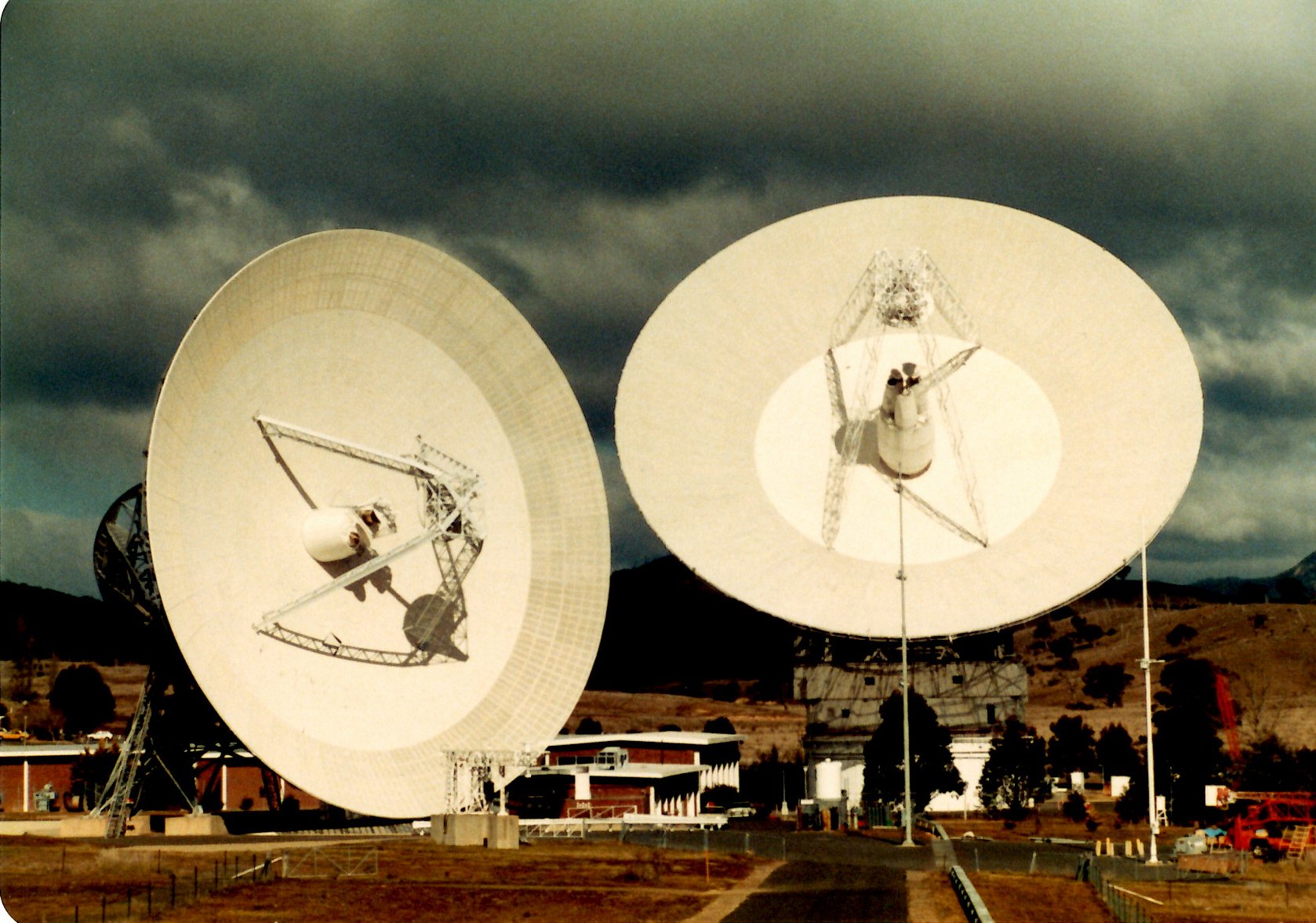In 1985 I had the opportunity to travel around the world for the NASA Deep Space Network (DSN). Left LA the last day of June, didn’t return home until mid-September. Along the way got to see some neat things, including the Southern Cross, the Magellanic Clouds, the lack of a southern polar star, kangaroos, more cockatoos than I’ll ever need, and the other two Deep Space Stations, DSS-40 (Tidbinbilla, Australian National Territory) and DSS-60 (Robledo de Chavela, Spain).

In the above picture of the site at Tidbinbilla, the 64 m dish is center right, while the 34 m HA-DEC (hour angle / declination) dish is to the left. The 64 m dish was subsequently embiggened to 70 m. The HA-DEC antenna is long gone. This JPL site discusses the advantages and disadvantages of the HA-DEC.
My trip was to lead the installation and test of the Base Band Array (BBA), two “NASA-blue” 7′ high rack-fulls of a state-of-the-art signal-processing system that would allow the real-time combining of received radio signals from each antenna at a site, and provide nearly the full signal gain that was possible. The BBA digitized the baseband signal from each antenna, then ran it through a correlator, and summed together the signals. Given that each DSS had a 64 m, 34 m, and at least one 26 m dish, it was possible to get nearly 1.6 dB gain over the 64 m dish alone. I think we were able to achieve better than 1.5 dB.
Why go to all that trouble for a measly 1.5 dB? Voyager 2 was on the extended grand tour phase of its trip, and emerald Uranus was coming up in 1986. That extra gain meant more images and science data coming back from Uranus!
More on the Deep Space Network is available here, including a little narration from my former section manager, Dr Al Bhanji!
